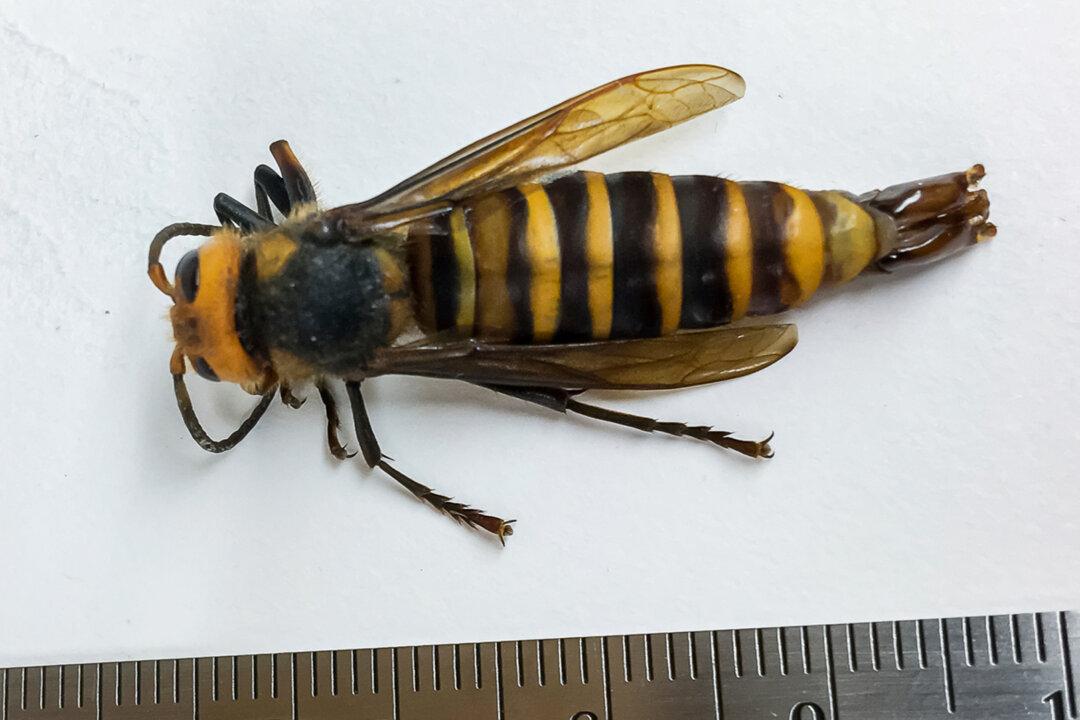The very first male “murder hornet” found in America was captured late July near Custer, Washington—the same place where a mated queen of the same species was found dead earlier this year.
The invasive, huge hornet, properly known as the Asian giant hornet or Japanese hornet, poses a grave danger to native honeybee populations, officials say, and this is cause for serious concern.






